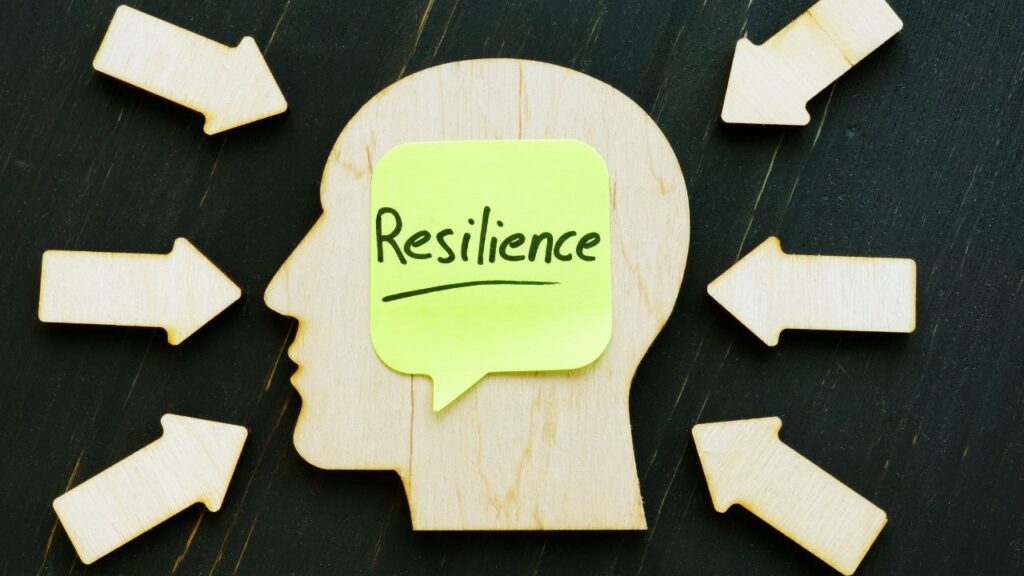Adversity is an inevitable part of life. Whether it’s a sudden job loss, a health crisis, a personal failure, or the loss of a loved one, challenges often arise when we least expect them. What sets people apart is how they respond to these obstacles. Resilience—the ability to adapt and recover in the face of adversity—plays a crucial role in navigating life’s difficulties.
In this article, we’ll explore the concept of resilience, why it’s important, and practical ways to cultivate it in your daily life.

Understanding Resilience
Resilience is not about avoiding stress or hardship but about developing the mental, emotional, and behavioral tools to cope effectively. It doesn’t mean you don’t experience distress; rather, it’s the ability to bounce back from it.
Key Traits of Resilient People:
- Emotional Awareness: Resilient individuals understand and manage their emotions effectively.
- Optimism: They maintain a hopeful outlook, even during tough times.
- Problem-Solving Skills: They approach challenges with a strategic mindset.
- Support Systems: They lean on relationships for encouragement and assistance.
- Adaptability: They adjust to new circumstances with flexibility.
The Importance of Resilience
Resilience isn’t just about surviving adversity; it’s about thriving despite it. Research shows that resilient individuals are more likely to:
- Maintain mental and physical health.
- Achieve personal and professional goals.
- Develop stronger relationships.
- Experience greater overall satisfaction in life.
When faced with setbacks, resilience helps us view challenges as opportunities for growth rather than insurmountable obstacles.
Practical Steps to Build Resilience
1. Cultivate a Growth Mindset
Your mindset shapes how you perceive and respond to adversity. A growth mindset—believing that challenges are opportunities to learn and grow—can significantly enhance resilience.
Action Steps:
- Reflect on past setbacks and identify lessons learned.
- Reframe failures as stepping stones to success.
- Challenge self-limiting beliefs with positive affirmations.
2. Strengthen Emotional Regulation
Resilient people manage their emotions effectively, staying calm and focused under pressure. Emotional regulation doesn’t suppress feelings but channels them constructively.
Techniques to Try:
- Mindfulness Meditation: Practice being present in the moment to reduce stress and anxiety.
- Deep Breathing Exercises: Use slow, deep breaths to calm the nervous system.
- Journaling: Write about your emotions to process them more clearly.
3. Build a Strong Support Network
No one can navigate adversity alone. Resilient individuals surround themselves with people who provide encouragement, advice, and companionship.
Ways to Build Connections:
- Spend quality time with family and friends.
- Join community groups or clubs that align with your interests.
- Seek mentorship or professional counseling during challenging times.
4. Develop Problem-Solving Skills
When faced with difficulties, it’s easy to feel overwhelmed. Resilience involves breaking down problems into manageable steps and focusing on what you can control.
Problem-Solving Strategies:
- Clearly define the problem and potential outcomes.
- Brainstorm multiple solutions, even unconventional ones.
- Take action on the most feasible solution while staying flexible.

5. Foster Physical Wellness
Your body and mind are deeply interconnected. Physical health directly impacts your ability to manage stress and maintain resilience.
Healthy Habits:
- Regular Exercise: Activities like walking, yoga, or strength training reduce stress and boost mood.
- Balanced Diet: Eat nutrient-rich foods to fuel your body and brain.
- Adequate Sleep: Aim for 7-9 hours of quality sleep to restore energy and mental clarity.
6. Practice Gratitude
Gratitude shifts your focus from what’s lacking to what’s present. This positive perspective can increase your resilience by fostering a sense of contentment.
Gratitude Practices:
- Keep a daily gratitude journal, listing three things you’re thankful for.
- Express appreciation to others, whether verbally or in writing.
- Reflect on positive moments during challenging times.
7. Embrace Change
Change is a constant in life. Resilient people view change as an opportunity rather than a threat, adapting to new circumstances with ease.
How to Embrace Change:
- Stay open-minded and flexible in your expectations.
- Focus on aspects of change that align with your goals or values.
- Build small routines during periods of uncertainty to maintain stability.
8. Set Realistic Goals
Resilience grows when you work toward achievable goals, even during difficult times. These goals provide a sense of purpose and direction.
Goal-Setting Tips:
- Break larger goals into smaller, actionable steps.
- Celebrate progress, no matter how small.
- Adjust goals as needed without abandoning your ultimate objective.
9. Learn from Role Models
Many inspiring figures have faced significant adversity yet thrived. Studying their stories can motivate and guide you in building resilience.
Find Inspiration:
- Read biographies or watch documentaries about people who overcame challenges.
- Seek role models within your personal or professional network.
- Reflect on their strategies and apply them to your life.
10. Give Back to Others
Helping others can foster resilience by shifting your focus from personal struggles to the positive impact you can have. Altruism enhances feelings of purpose and connectedness.
Ways to Give Back:
- Volunteer for causes you’re passionate about.
- Offer support or mentorship to someone facing difficulties.
- Perform small acts of kindness regularly.
Resilience in Action: A Real-Life Example
Consider the story of J.K. Rowling, who faced numerous rejections, financial struggles, and personal setbacks before publishing the Harry Potter series. Her resilience came from her belief in her story, support from loved ones, and determination to keep trying despite failures.
Rowling’s journey demonstrates that resilience isn’t about avoiding adversity but embracing it as a catalyst for growth.

Final Thoughts: Resilience Is a Lifelong Journey
Building resilience is not an overnight process but a lifelong commitment to self-growth. Each setback you face provides an opportunity to strengthen your resilience, preparing you for future challenges.
Remember:
- Resilience is a skill that can be cultivated through consistent effort.
- Every challenge is a chance to grow stronger and wiser.
- By nurturing your mental, emotional, and physical well-being, you can navigate adversity with confidence and grace.
When adversity strikes, your resilience will remind you that you are capable of enduring, adapting, and thriving. With practice, you’ll find that life’s challenges no longer feel insurmountable but become stepping stones on your path to personal fulfillment and success.



